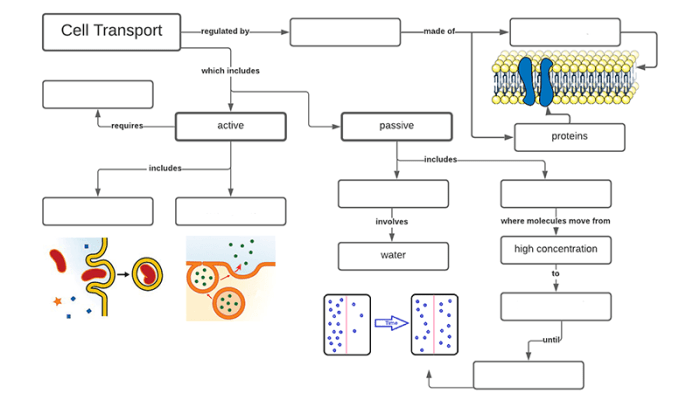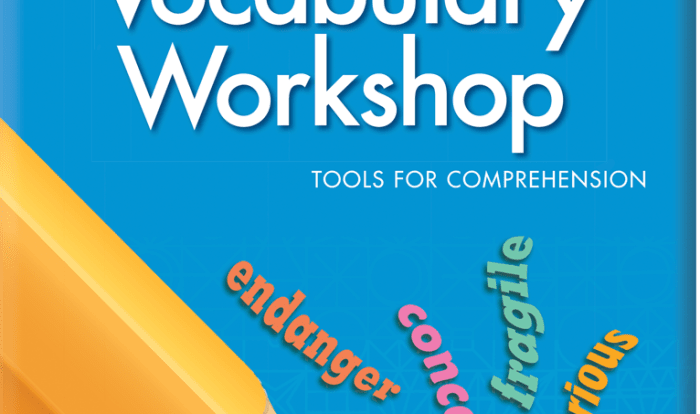The cell graphic organizer answer key PDF, an invaluable resource for educators and students alike, provides a comprehensive guide to creating and utilizing graphic organizers to enhance understanding of cell biology concepts. With its detailed explanations, practical examples, and assessment criteria, this document empowers educators to effectively integrate graphic organizers into their teaching strategies, fostering deeper student engagement and improved learning outcomes.
Cell Graphic Organizers: Cell Graphic Organizer Answer Key Pdf
Cell graphic organizers are visual representations of cell structures and functions. They are designed to help students learn about cells in a more engaging and interactive way.
There are several different types of cell graphic organizers available, each with its own advantages and disadvantages.
Types of Cell Graphic Organizers, Cell graphic organizer answer key pdf
- Venn diagramsare used to compare and contrast two or more cells or cell components.
- Flowchartsare used to show the sequence of events in a cell process.
- Mind mapsare used to brainstorm and organize information about cells.
Cell graphic organizers can be used in a variety of educational settings. They can be used to introduce new concepts, review material, or assess student learning.
Creating Effective Cell Graphic Organizers
Creating effective cell graphic organizers requires a systematic approach that aligns with specific learning objectives. By following these steps, educators can design organizers that enhance student understanding and engagement.
Choosing the Appropriate Type of Organizer
The first step in creating an effective cell graphic organizer is to select the appropriate type of organizer for the intended learning objective. Common types of organizers include:
- Venn Diagrams:Compare and contrast two or more concepts or processes.
- Flowcharts:Depict the sequence of events or steps in a process.
- Mind Maps:Explore connections and relationships between concepts.
- Concept Maps:Visually represent the hierarchical structure of concepts and their relationships.
Using Cell Graphic Organizers for Learning

Cell graphic organizers are powerful tools that can enhance student understanding of cell biology concepts. They provide a visual representation of complex information, making it easier for students to identify and understand relationships between different cell structures and functions.
Graphic organizers can be used in a variety of ways to facilitate learning. For example, they can be used as a pre-reading activity to help students activate prior knowledge and make predictions about the text. They can also be used as a during-reading activity to help students track key information and identify important concepts.
Additionally, graphic organizers can be used as a post-reading activity to help students summarize and review the material.
Group Discussions and Presentations
Cell graphic organizers can also be used to facilitate group discussions and presentations. By working together to create a graphic organizer, students can develop a shared understanding of the material and identify areas where they need additional support. Additionally, graphic organizers can be used as a visual aid during presentations, helping students to organize their thoughts and communicate their ideas more effectively.
Independent Study
Cell graphic organizers can also be used to support independent study. Students can use graphic organizers to review their notes, identify key concepts, and develop study questions. Additionally, graphic organizers can be used to create concept maps, which can help students to see the big picture and understand how different concepts are related.
Evaluating Cell Graphic Organizers

Evaluating cell graphic organizers involves assessing their effectiveness in promoting student understanding of cell biology concepts. This includes evaluating the clarity and accuracy of the organizer, as well as its ability to engage students and facilitate their learning.
Assessing Student Understanding
Student understanding can be assessed based on the organizers they create. Clear and well-organized diagrams indicate a strong understanding of cell structures and functions. Organizers that incorporate multiple representations, such as drawings, labels, and written explanations, demonstrate a deeper level of comprehension.
Role in Formative and Summative Assessments
Cell graphic organizers can be used for both formative and summative assessments. In formative assessments, organizers can provide insights into student understanding during the learning process. They can be used to identify areas where students need additional support. In summative assessments, organizers can evaluate student learning outcomes and demonstrate their ability to synthesize and communicate their knowledge.
Designing Cell Graphic Organizers

Creating effective cell graphic organizers requires careful design and consideration. Technology tools can be utilized to create digital organizers that are interactive and engaging. These digital organizers can incorporate multimedia elements, such as videos, animations, and simulations, to enhance the learning experience.
When designing organizers for students with diverse learning needs, it is essential to consider visual clarity, simplicity, and the use of multiple modalities to cater to different learning styles.
Examples of Creative and Engaging Organizer Designs
- Interactive cell model: Students can manipulate a 3D model of a cell to explore its different structures and functions.
- Virtual cell tour: Students can take a guided tour of a cell, zooming in and out to observe the organelles and their interactions.
- Cell analogy chart: Students can create a chart that compares the structures and functions of a cell to a familiar object, such as a factory or a city.
- Cell comic strip: Students can create a comic strip that tells a story about the life of a cell, highlighting its different functions and processes.
- Cell song or rap: Students can write and perform a song or rap about the cell, incorporating key concepts and vocabulary.
Clarifying Questions
What are the different types of cell graphic organizers?
Cell graphic organizers come in various forms, including Venn diagrams, flowcharts, mind maps, concept maps, and bubble maps, each with unique strengths for organizing and visualizing information.
How can cell graphic organizers enhance student understanding?
Graphic organizers help students visualize complex concepts, identify relationships, improve memory, foster critical thinking, and promote collaboration.
What criteria are used to evaluate the effectiveness of cell graphic organizers?
Effective graphic organizers should be clear, concise, organized, visually appealing, and aligned with learning objectives.



